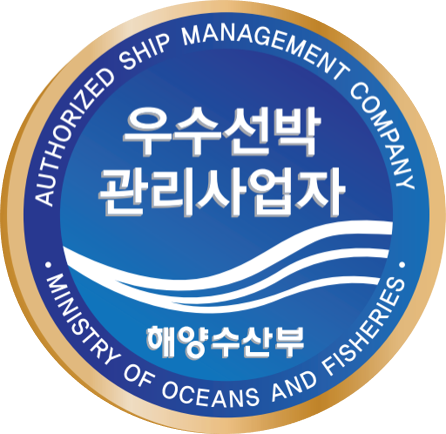Report provides analysis of SOLAS regulations on steering and manoeuvr…
페이지 정보
작성자 최고관리자 댓글 0건 조회 1,167회 작성일 21-07-12 21:51본문
Report provides analysis of SOLAS regulations on steering and manoeuvrability
by The Editorial Team
EMSA published a report(첨부참조), presenting the findings from the STEERSAFE project, conducted by DNV.
The STEERSAFE project aims to provide a holistic analysis of the SOLAS regulations and associated circulars related to steering and manoeuvrability, provide a consistent update of these and to propose practical and meaningful performance parameters in normal service and in failure mode.
More specifically, the first phase of the project aims to:
- Provide an overview of the current situation, in terms of a description of relevant steering and propulsion systems and the gaps and inconsistencies in the current SOLAS regulations for steering and manoeuvrability;
- Establish goals and functional requirements for steering and manoeuvrability.
Goals and functional requirements are developed based on a comprehensive hazard identification considering a review of casualty and incident reports of databases, recursive investigation of IMO provisions and an expert workshop.
The second phase of the project aims to:
- Define performance requirements and parameters for safe steering and manoeuvrability in both normal and failure mode, as well as the operating conditions under which the parameters should be tested;
- Carry out the Verification of Conformity between the Functional Requirements previously proposed and the current IMO Provisions.
The final phase of the project aims to:
- Carry out the revision of update and development of amendments to the present prescriptive regulations and associated IMO Resolutions and Circulars;
- Map the current practice in terms of propulsion and steering/manoeuvrability standards for Safe Return to Port (SRtP), analyse the results and, if relevant, propose a harmonised approach consistent with the revision/update of the performance requirements for steering.
Gaps in SOLAS regulations
The report says that the investigation of the current SOLAS regulations reveals that the regulations are in many cases technology-specific and prescriptive.
They do not address hazards related to erroneous operation. Furthermore, the redundancy requirements and testing for multi-unit configurations are not properly addressed, nor is the dependency of/interaction with other systems and functions
Currently, no specific requirements for testing and verification of manoeuvrability are included for reduced service condition for any of the technical solutions. For Safe Return to Port, required available capacity and performance parameters after failure need to be specified.
Hazards and failure modes
Hazards regarding different parts of the steering system have also been identified and later ranked according to likelihood and severity, providing the basis for the hazards that need to be addressed by the functional requirements. New identified hazards arise from increased system integration and complexity, and these are not considered in existing regulations.
Developing a goal-based standard
According to EMS, a top goal for steering, which addresses the main concerns, is defined. To support the top goal, four individual goals, specifying how the top goal is achieved, are developed. Additionally, a top goal and two individual goals for propulsion are also defined.
Furthermore, functional requirements, addressing the hazards previously selected and providing the criteria for meeting the goals, are defined.
The Verification of Conformity has proved that the functional requirements for steering and propulsion are in general conformed with by the current regulations, meaning that they provide adequate performance for safe operation and sufficient resilience for typical failures. In some cases, the terminology in the regulations is vague, for instance with respect to “sound” design; details of the overall assessment of the actuating system and the steering force unit are not provided
Moreover, functional requirement VI (Minimize impact of erroneous operation) is regarded as not satisfied by the regulations. Today’s modern systemshave the potential to endanger the ship if not adequately operated. “This risk is not considered by current regulations.”
Requirements for steering and maneuverability
During the second phase of the project, the Functional requirements I “The steering system provides adequate steering performance for ship operation” and VIII “The propulsion system provides adequate astern propulsion performance for ship operation” have been further developed to include clear and quantitative performance requirements and parameters in normal and failure mode.
The functional requirements for steering provide performance requirements, also referred to as expected performance, for the following:
- Performance in normal and failure mode
- The resilience of the system
- The design considering uncertainty and degradation
- Protection against impacts
- Erroneous functionality
- Operation and the basis for adequate operation
Furthermore, based on the developed functional requirements, as well as a detailed investigation of system reliability of different system architectures, the redundancy on system level is considered equivalent to redundancy on component level, i.e. it is suggested to apply the same criteria for vessels with single and multiple propulsion lines and/or steering systems.
Preferably the ship performance shall be tested at a full-scale sea trial in the following condition; summer load line draft, even keel. However, if this is not possible, tests as close as possible to full load draught and zero trim shall be performed and a recognized method (CFD calculations or model tests) may be accepted for predicting the compliance at the specified condition. Full scale CFD calculations thoroughly verified by third party, are recommended
noted DNV.
Safe return to port
Safe Return to Port (SRtP) has been addressed in order to analyse the industry practice and, if appropriate, to propose a harmonized approach. The report concludes that the current lack of a harmonized approach in the SRtP scheme for the implementation of remaining propulsion performance after a casualty, has unfortunate consequences. It therefore seems appropriate to suggest a harmonization, in particular with regards to means of verification, calculation method and environmental conditions.
첨부파일
- DNV- STEERING AND MANOEUVRABILITY Report-2021.07.pdf (3.9M) 0회 다운로드 | DATE : 2021-07-12 21:51:46




